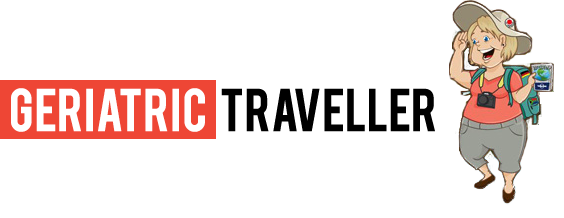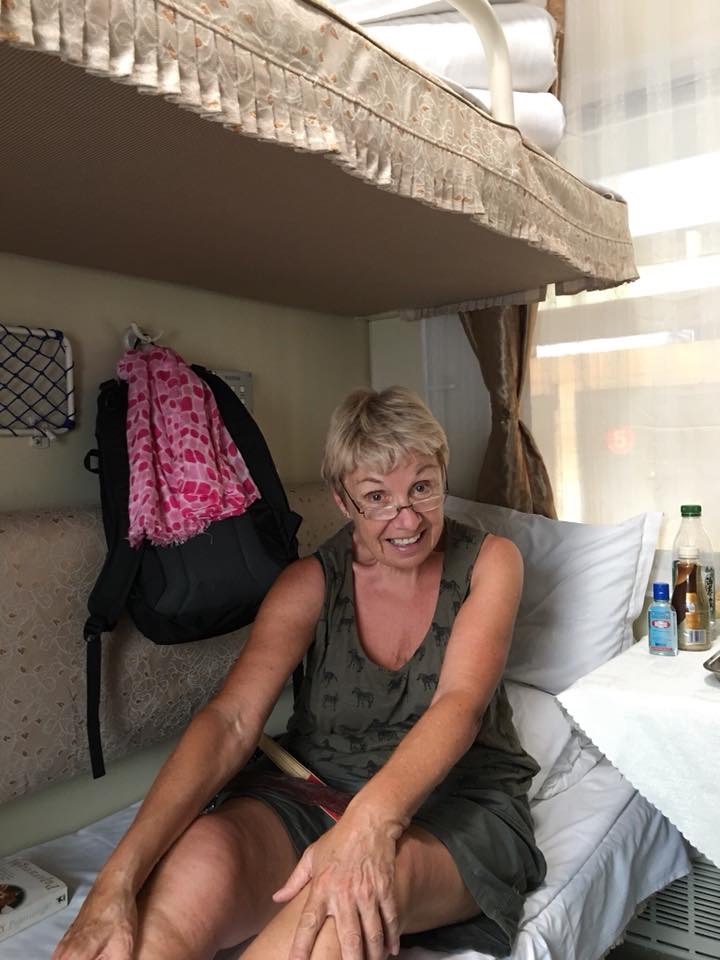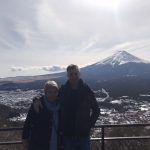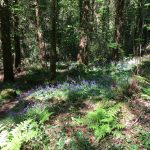Is it safe to travel to Syria?
Most of the media seen by us paint a very negative picture of Syria, and offers few redeeming stories, so inevitably people ask if it is safe to visit.
My advice to anyone travelling to Syria, or indeed anywhere else – if you feel very uneasy or frightened about the idea, don’t go. Risk accompanies all travel, but it’s calculated risk, and that calculation differs with each individual. Mindset is so important when looking at anything new, and fear would be a huge barrier to pleasure.
I was there at the end of 2019, and for me it was perfectly safe, and at no time did I feel under any kind of threat.
As always with these more unusual destinations, visas are a huge issue, so the obvious thing for me to do was to persuade my son, Johnny, (onestep4ward.com) to take me when he was organising a trip.
Mission accomplished, a trip was planned for the end of 2019, and I was included. I booked a flight to Beirut, where the group was meeting prior to travelling by road to the Syrian/Lebanese border.
In more recent years Beirut seemed to have moved away from violence, and was seen again as a party city, but we were all aware that there had been civil unrest in Lebanon generally, and in Beirut in particular, where there were road blocks everywhere, set up by the protesters, and we saw some of these on a short stroll that evening.
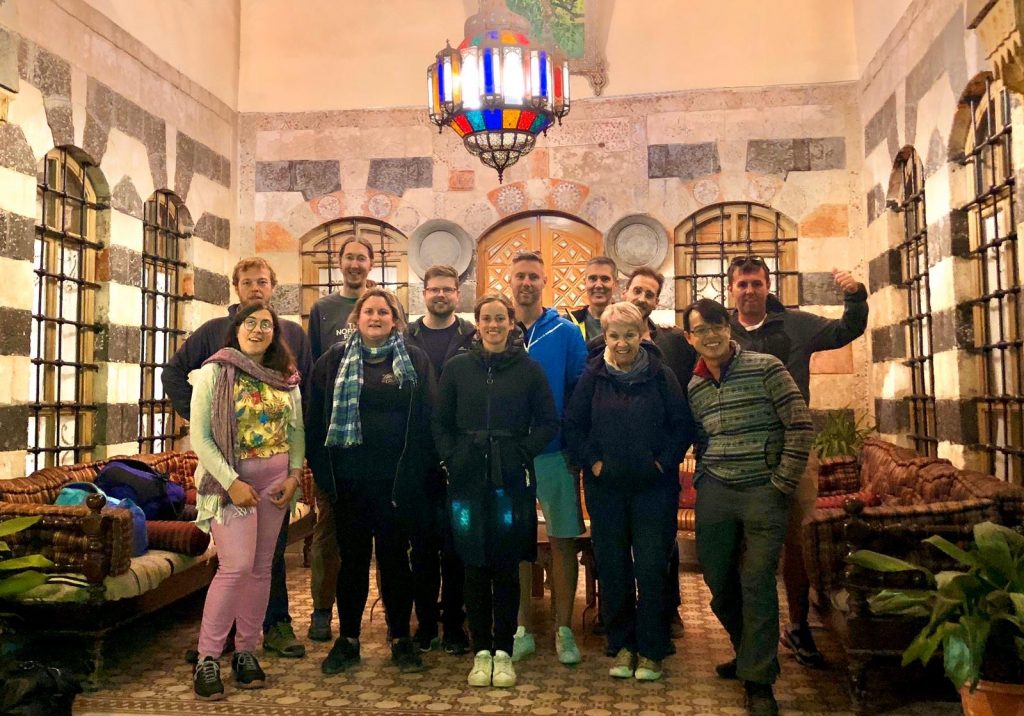
Johnny had discussed the situation with various Lebanese contacts, and as a result he felt, and everyone agreed, we should set off for the border at Masnaa much earlier than originally necessary to allow for hold ups, diversions and general chaos.
And so, at 04.30am three taxis arrived at our Beirut hotel to take the group to the border. Roadblock debris was everywhere, but fortunately none of the roadblocks were manned, and so we had a clear run to Masnaa, arriving at sunrise. Unmanned road blocks weren’t the only reason for our early arrival, however. Early into the journey it was very apparent that speed limits were irrelevant, as were many other traffic regulations! Nonetheless we arrived safely at the border, and after a bit of a wait, we walked the short distance to the Lebanese emigration post, and were all stamped out of Lebanon.
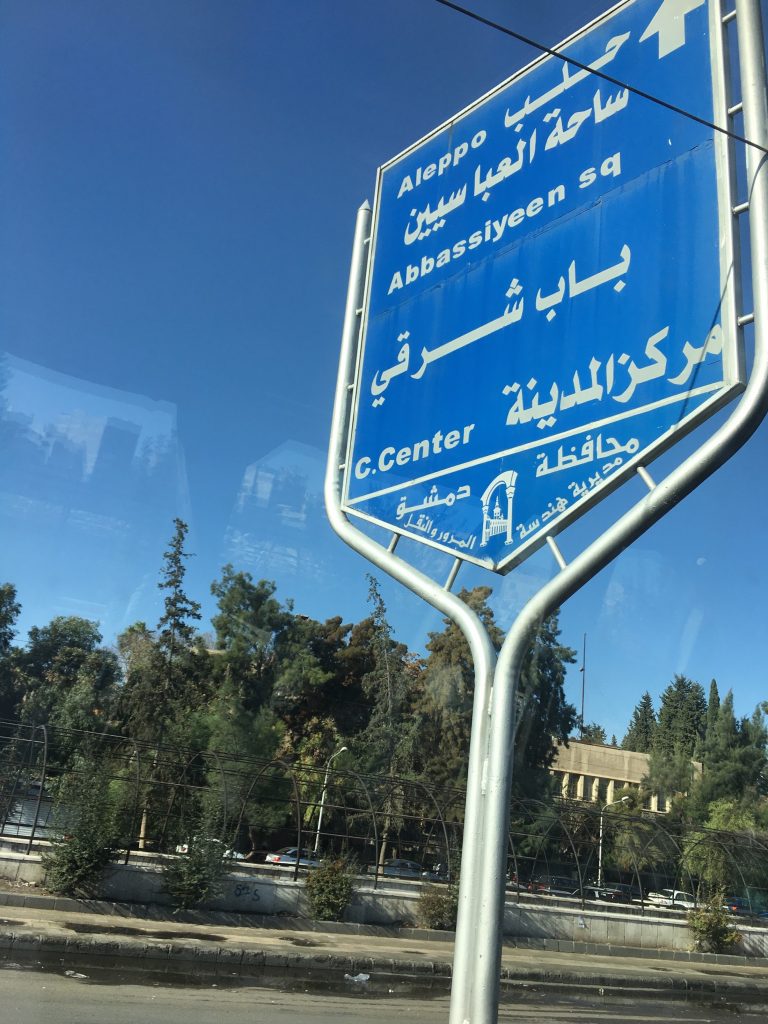
No man’s land , between the two border posts seemed togo on for miles because we couldn’t see even a sign indicating Syrian immigration. Fortunately Johnny had arranged the our Syrian guide pick us up by bus, close to the Lebanon side, because I reckon the Syrian post was probably nearly five miles further into the country.
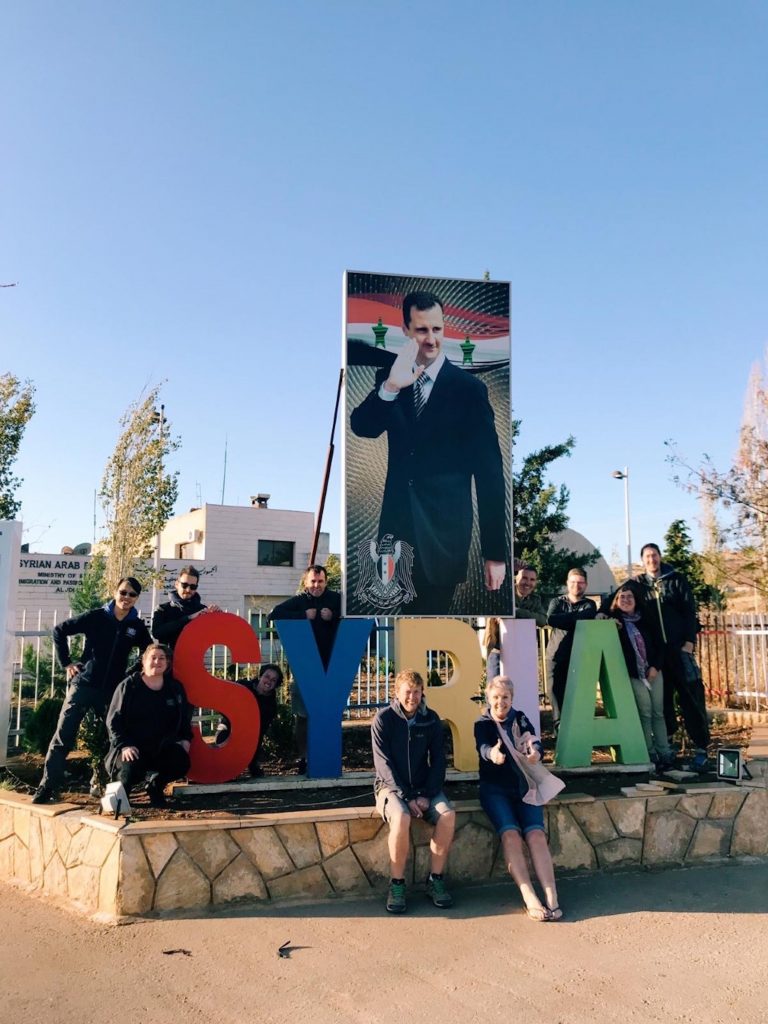
Another wait when we got to Syrian immigration, with everyone keeping their fingers crossed that all the passports were okay. They were and we were in Syria! Just over an hour later we were in the outskirts of Damascus. There were few signs of the conflict visible, which was a relief, and soon we could see the walls of the old city. We stopped in a busy square, debussed, and got our luggage. A short walk away was our hotel, Beit al Mamlouka. The outside is very unprepossessing, but once we were in, it was a real diamond, with wonderful staff, and we were met with the most delicious breakfast spread. (See separate review of Beit al Mamlouka)
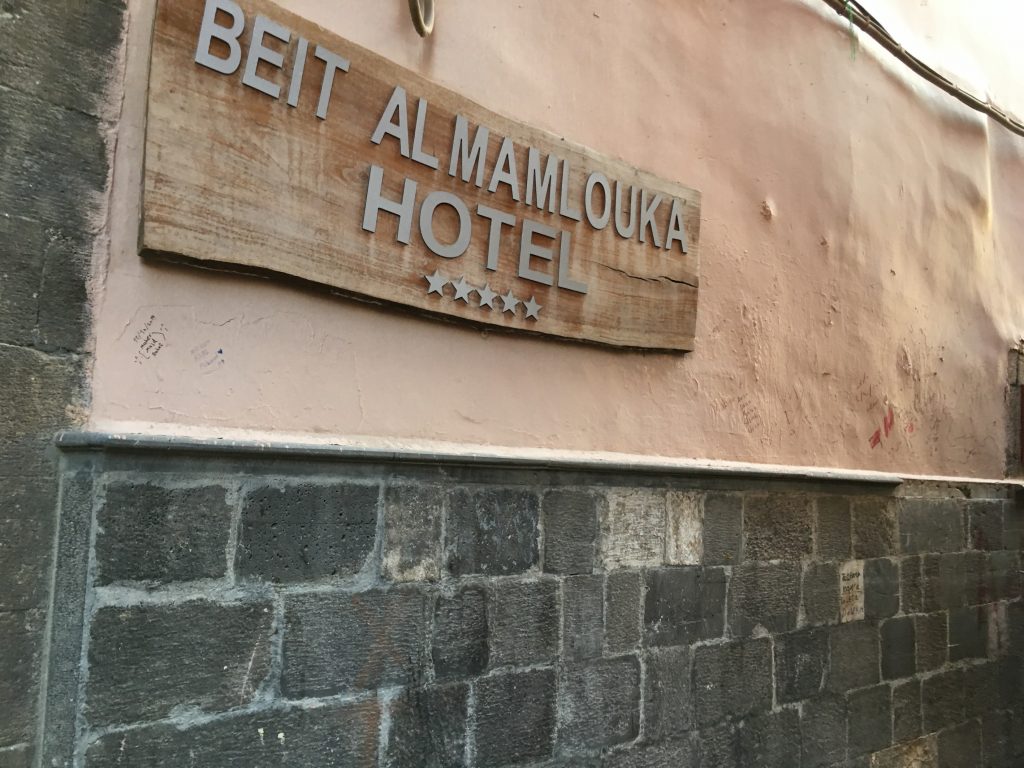

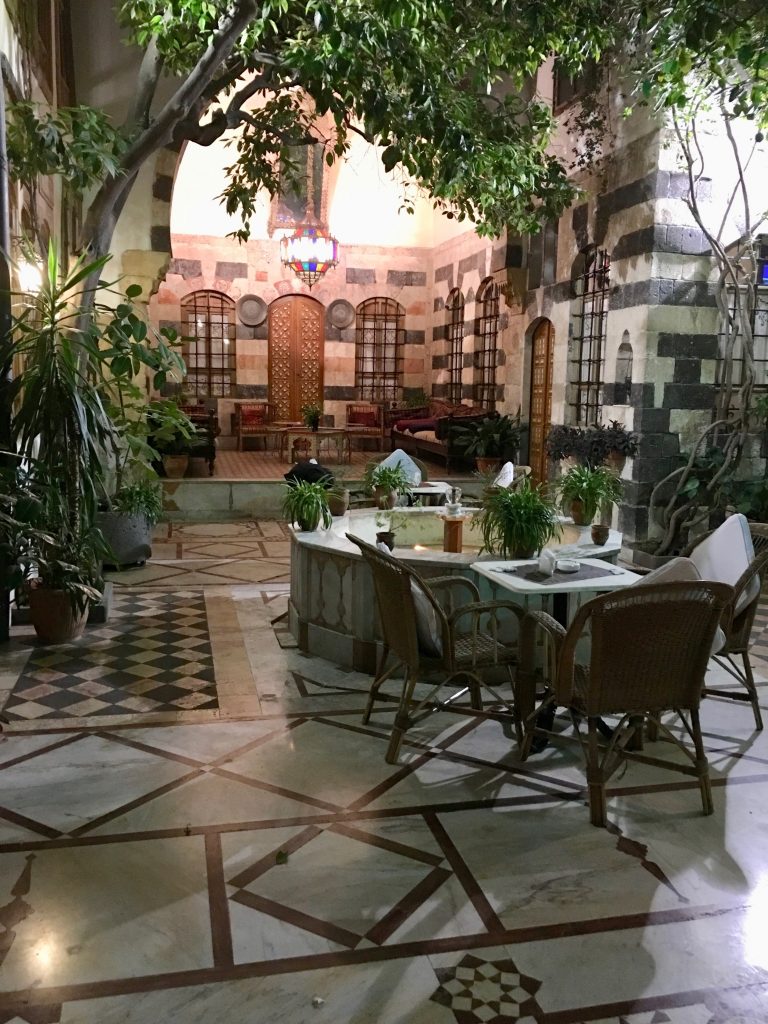
By the time we finished it was late morning, although, because of our early start, it felt like much later in the day! We had a little bit of sightseeing, and then time to ourselves – to explore the souk, have a rest, find coffee shop, whatever!
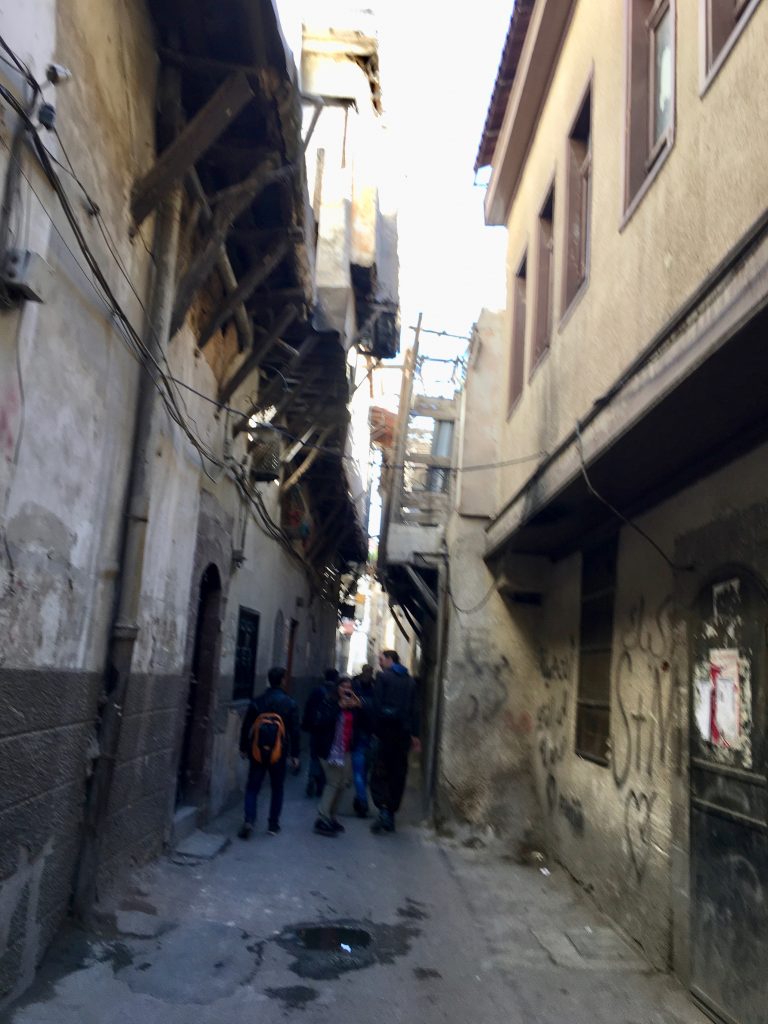
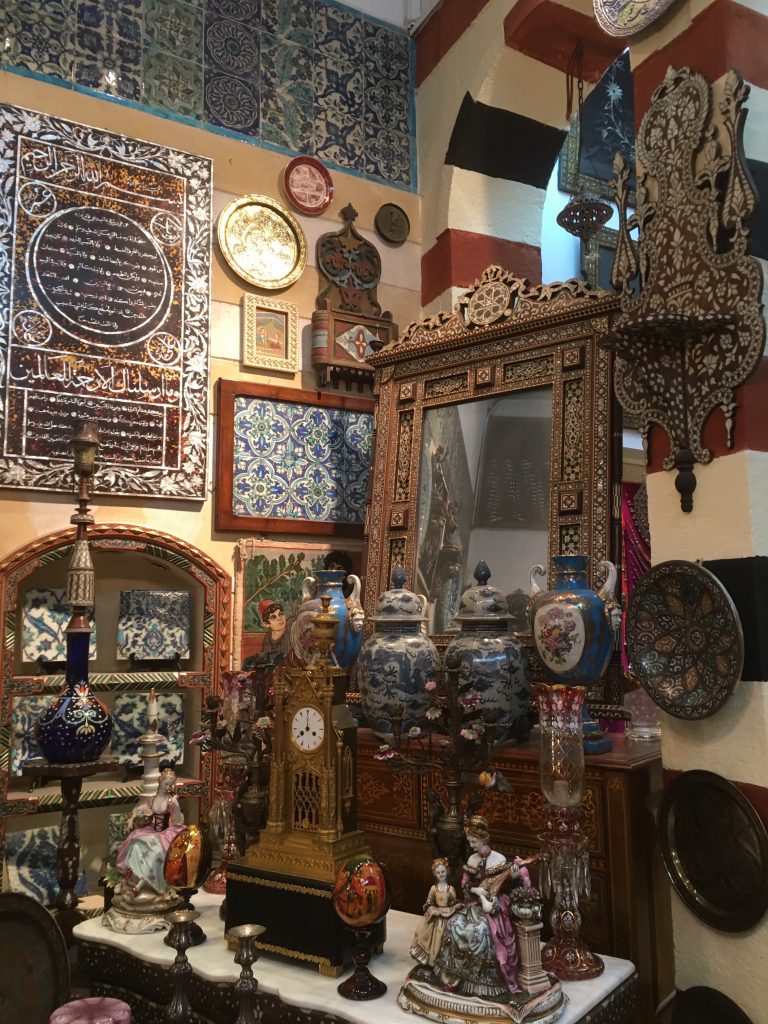
I chose to do all three, and then met up with the others to go to a nearby restaurant for dinner.
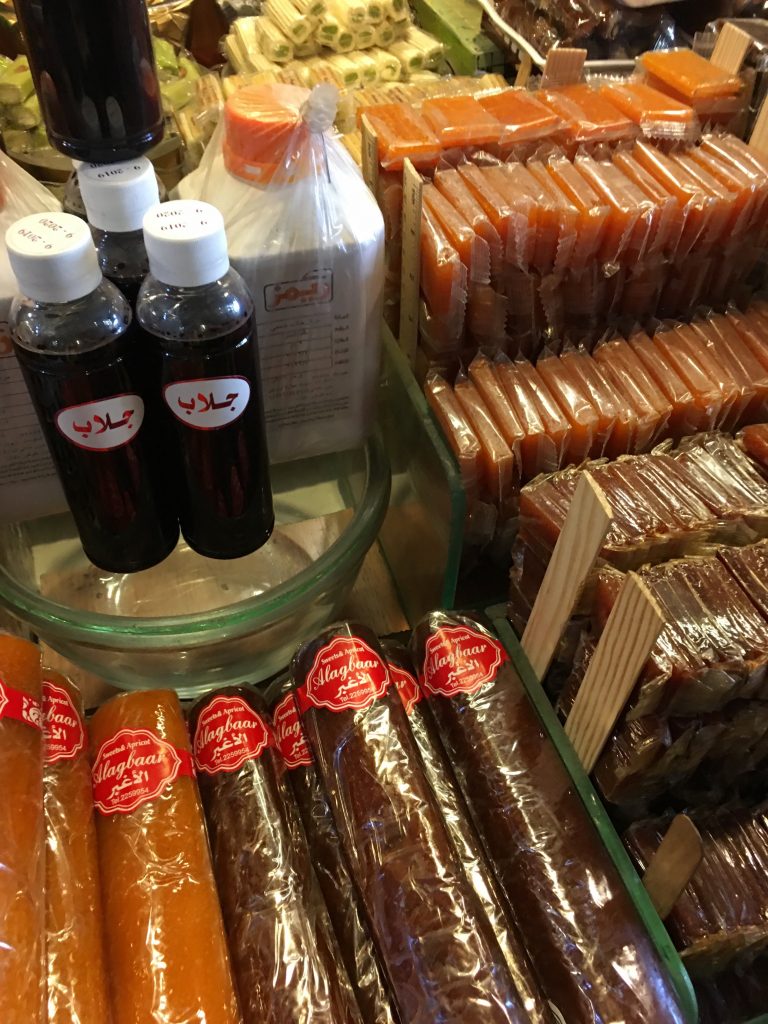
I have fallen in love with this city and its warm welcoming people. Every where we go there are shouts of “Welcome to Damascus” and “Thank you for coming to Syria”, as well as the “Where are you from?” that is quite common in less visited countries. Here there were nods and smiles everywhere we looked. It was very touching.
After dinner I went back to the hotel along with some of the others, while the remainder of the group explored the night life in Damascus.
The next day, our guide took us on a walking tour of the old city. The narrow, shop lined streets and alleys of the souk were not really conducive to a group walking tour, but we managed.
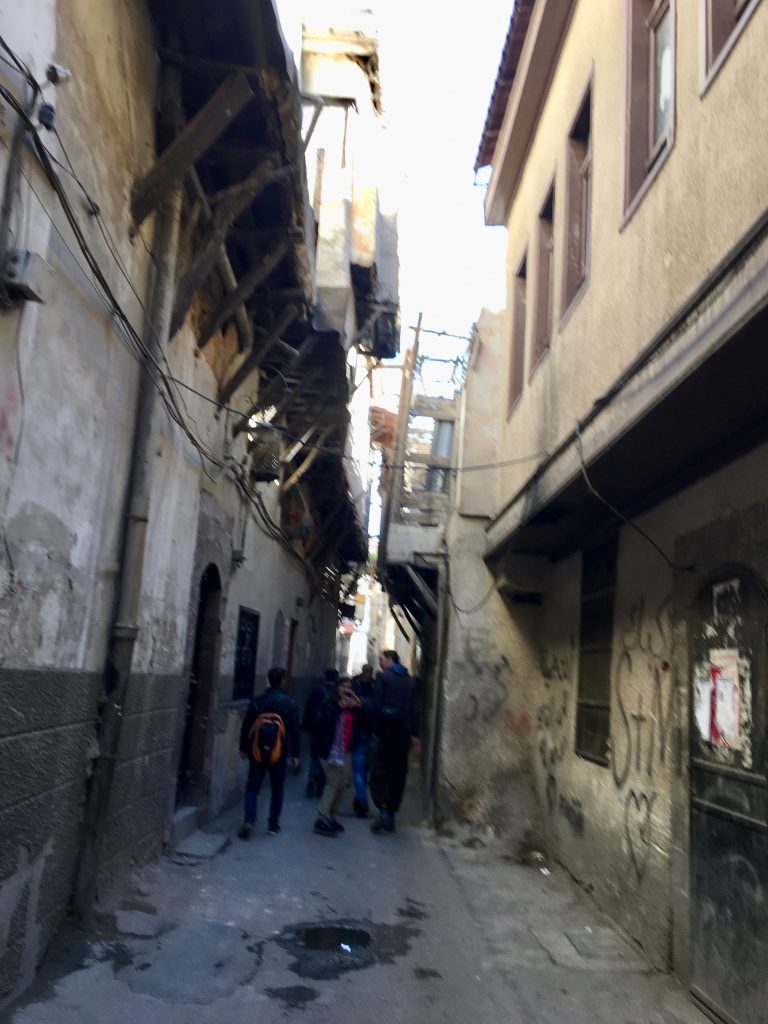
Again we all felt very welcome, and some of the welcoming shopkeepers from the previous day seemed to recognise us.
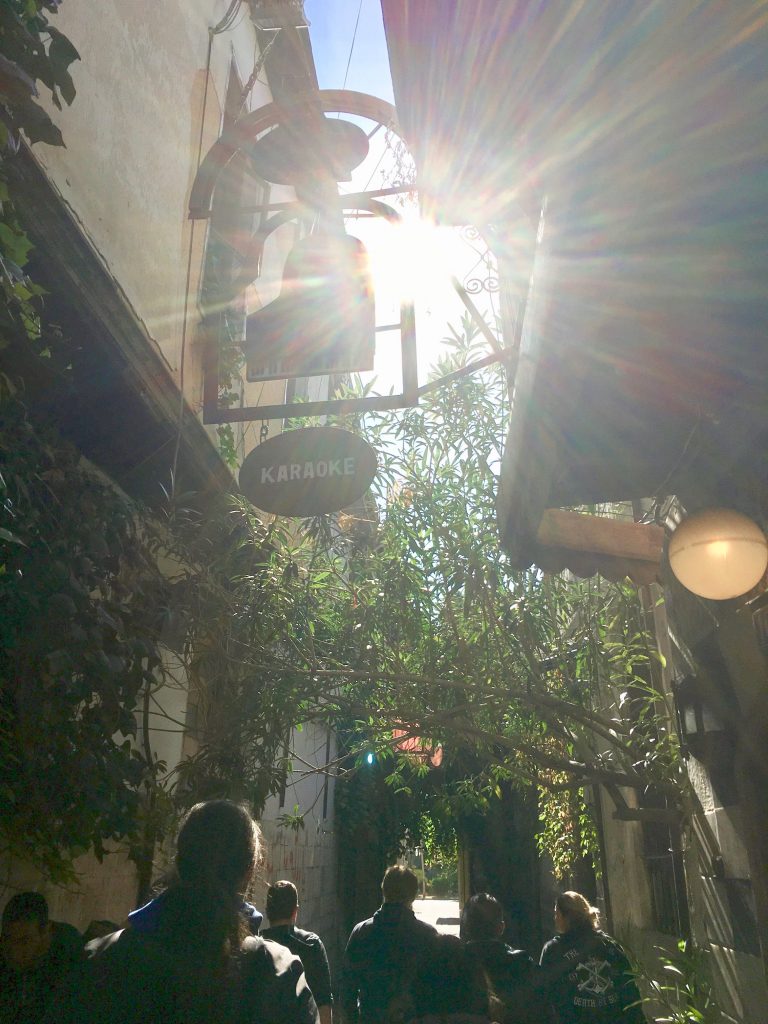
With our guide we went to one of the oldest Christian churches in the world. It dates back to St Paul and is built in what appears to be an underground cave, and consequently, is a tiny space. Nonetheless, it is still used for prayer, and there were a number of people praying while we were there.
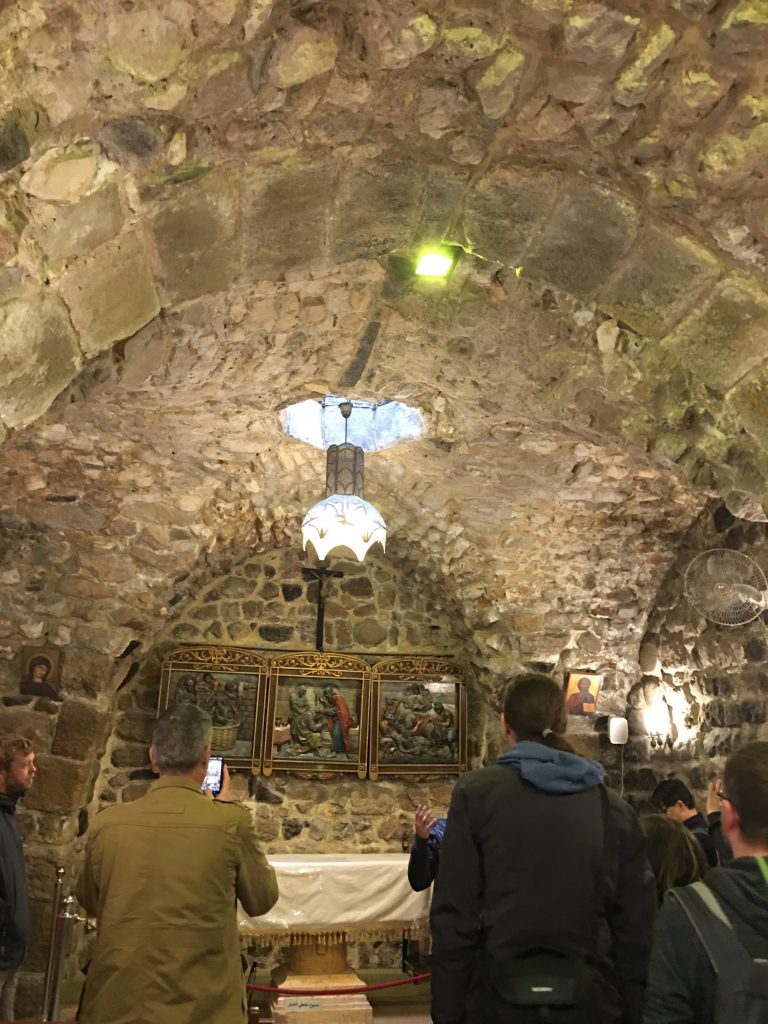
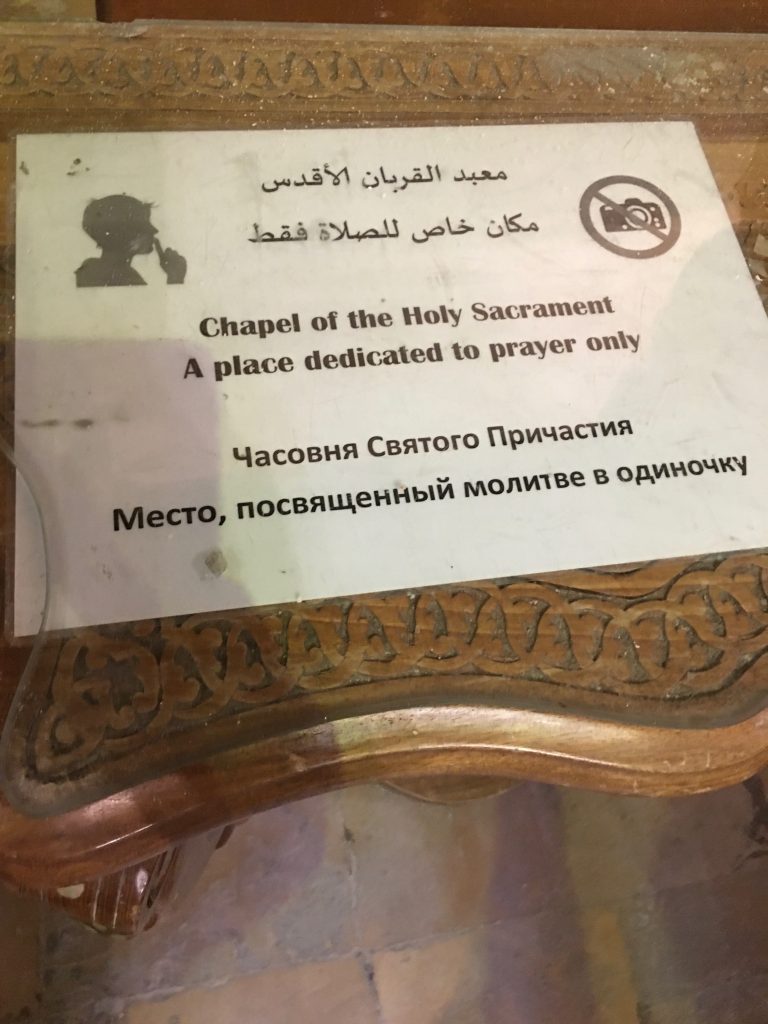
We also visited one of the oldest mosques in the world, Umayad Mosque, and this was in complete contrast because it is also one of the largest mosques in the world. It is built almost entirely from marble, and is quite spectacular.
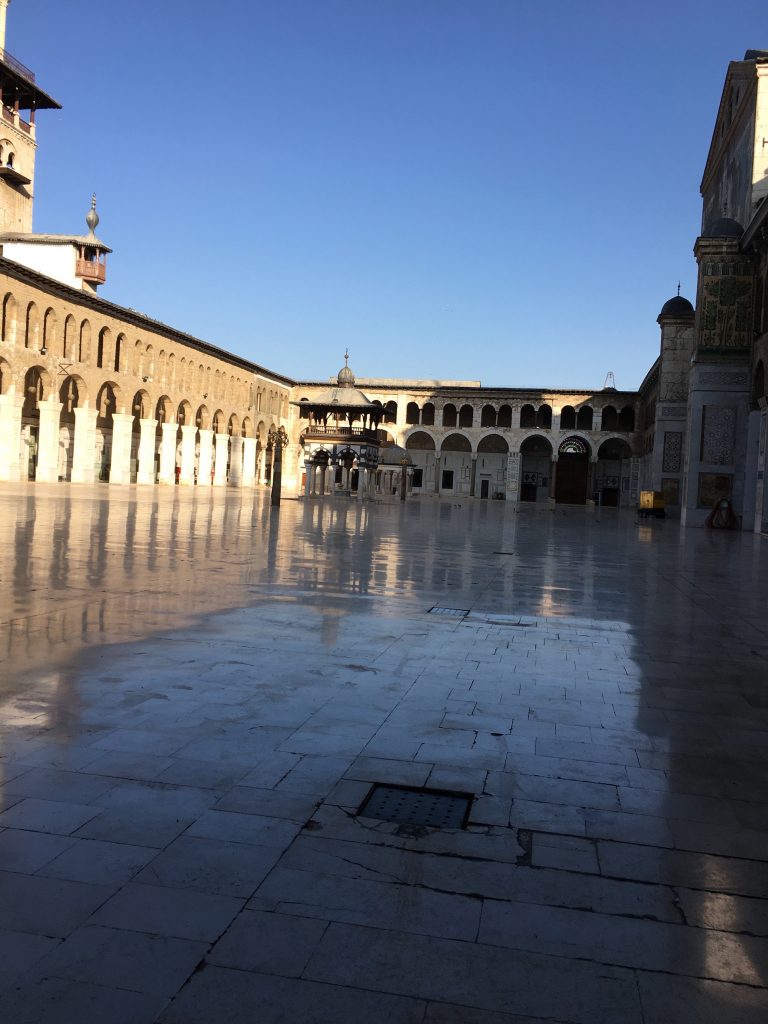

After lunch locally, we went to Damascus Al Harir Caravanserai. Caravanserais (or khans) were specially built to shelter men, goods and animals along the Silk Route between the 9th and 19th centuries. There were thousands built, and they are particularly noted for their geometric architecture. However, very few remain, and this particular one is one of the finest examples. Today there is a cafe on the ground floor, and some of the upstairs rooms are being used as offices.
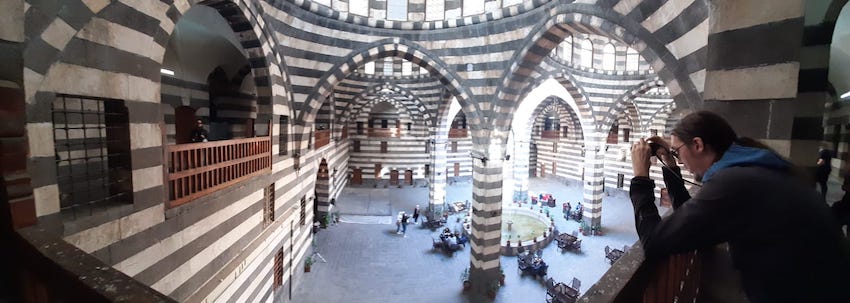
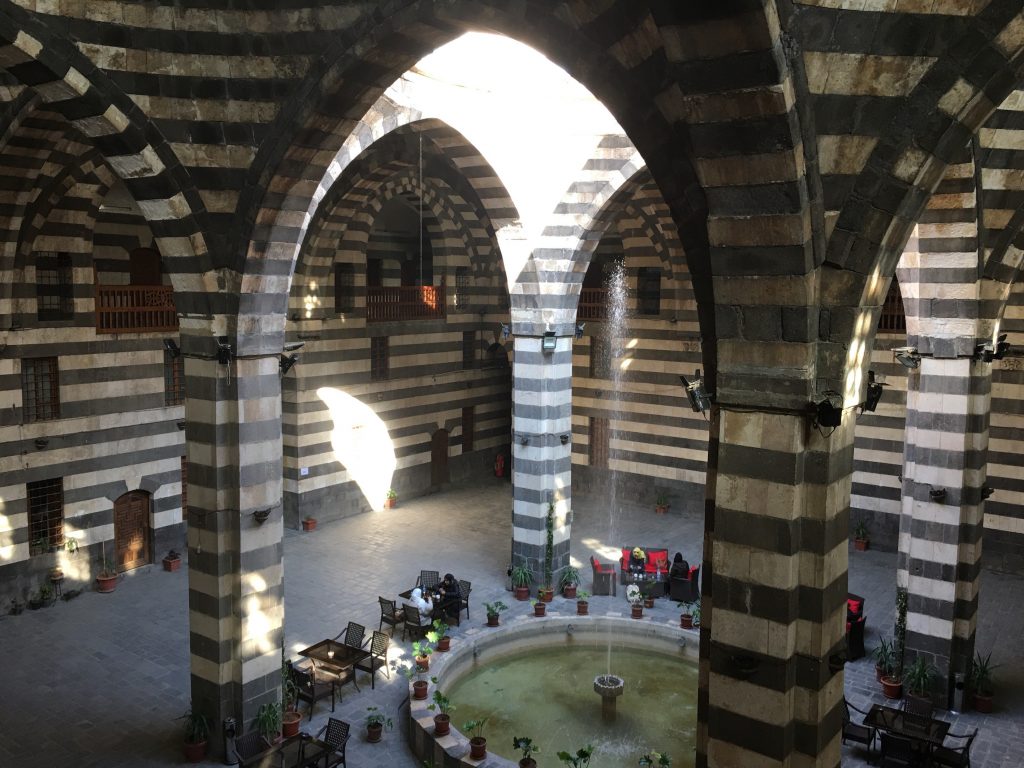
On the way back through the winding narrow alleys and souks we stopped at Damascus older cafe – Cafe Al Nofara, built 250 years ago, and apparently in business ever since. Al Nofara is also known for its storyteller, or al hakawati, Abu Shadi who is apparently the only hakawati performing regularly in Damascus.
We were there in the afternoon, and unfortunately, story telling is an evening event. That evening, however, some of us were ready quite early for dinner , so we decided we would go back to Al Nofara to have a look.
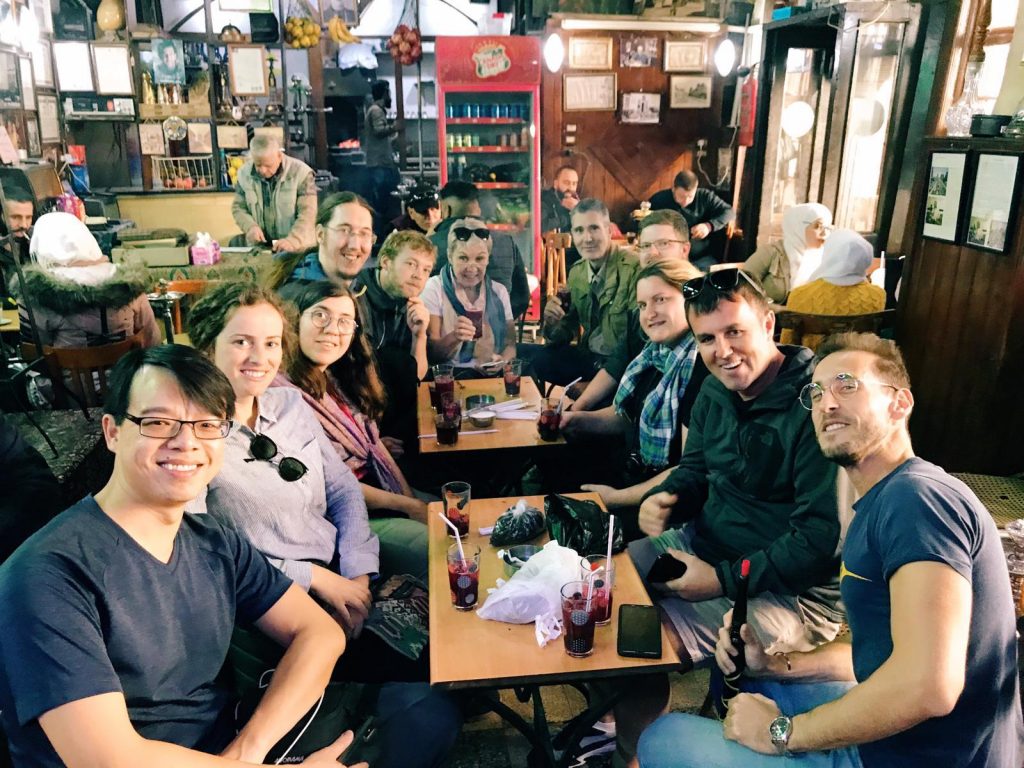
We had front row seats, or rather, we occupied a table very close to the raised small dais where we assumed Abu Shadi would sit. The cafe was slowly filling up and eventually a middle-aged man wearing a long white robe over his clothes, and a red fez came and sat on the throne-like chair on the dais. He was an imposing figure, not least because as well as carrying tea, he was also carrying a huge sword! Obviously the story was in arabic, but the hakawati was unbelievable – he used every part of himself to tell his story. He was up and down, bent and straight, moving and still, one minute cajoling, the next, wheedling. Sometimes he harangued us, and woe betide those not listening because banged his sword on any nearby table and the noise would have wakened the dead!
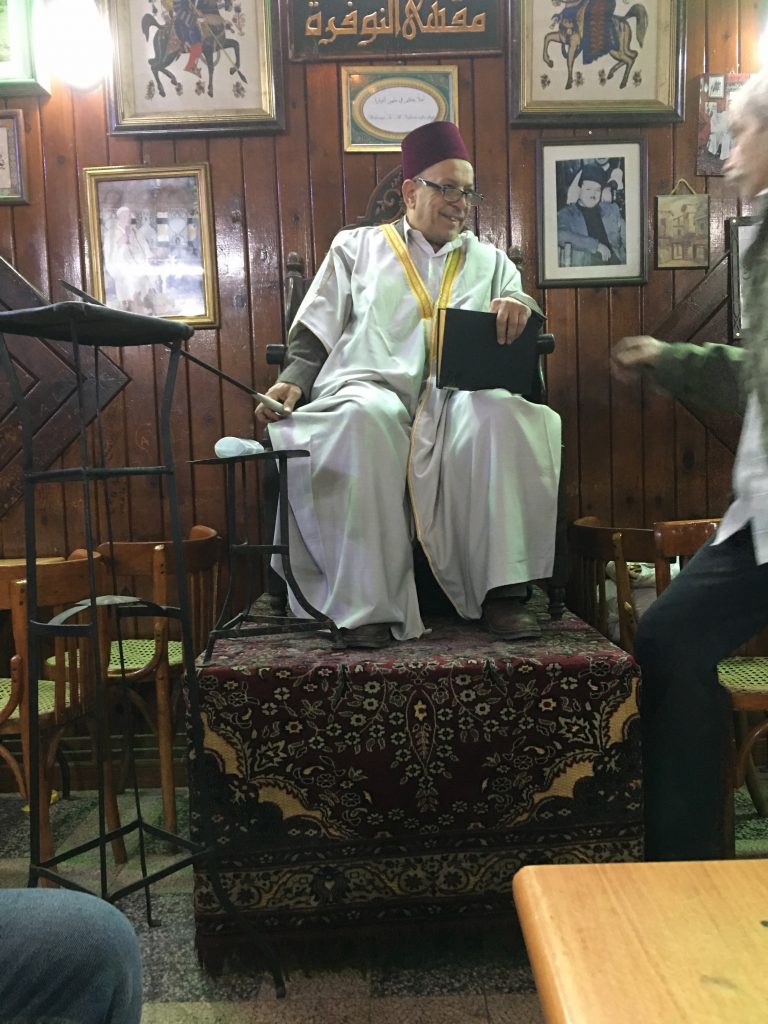
We had to leave Abu Shadi and his story to meet the others for dinner. Before we went to the cafe, we got the name of restaurant in which we were eating, and made our way there directly.
Following another good meal, as on the previous night, some people went to find the night life, and others went back to the hotel. We had a relatively early start because we were heading out of Damascus, and going north towards Homs.
Yet another glorious spread for breakfast, accompanied, for me, by mint tea – proper mint tea with sugar, hot water and copious amounts of fresh mint leaves! Absolutely delicious!
On our drive out of Damascus we saw isolated examples of the war, but little of the scale we all expected to see.
Our main morning stop was Maloula, one of the last remaining places in the world where Aramaic, the language of Christ, is still spoken. We went to the historic Mar Sarkis Convent, part of a site in which is the St Sergius and St Bacchus Cathedral, dating from 4th century and one of the oldest churches in the world.
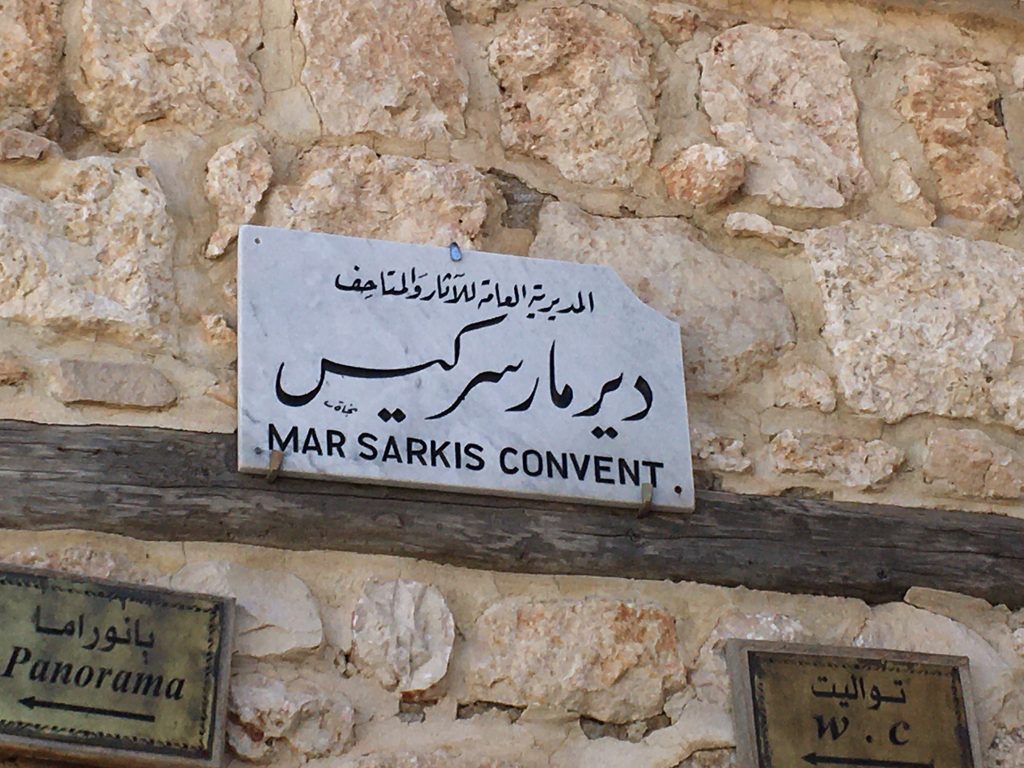
In 2013, Islamic rebels used the an hotel at the site as a base, they were ousted by the Syrian army, but not before wreaking indescribable destruction on the church and an adjoining monastery, and the hotel Irreplaceable icons and iconostasis were destroyed or removed, the altar was reduced to rubble, wall paintings were slashed and the main cross fell.
However, although heavily shelled, the basic structure remained intact, and repairs and restoration, though basic, are ongoing, and the church is usable again.
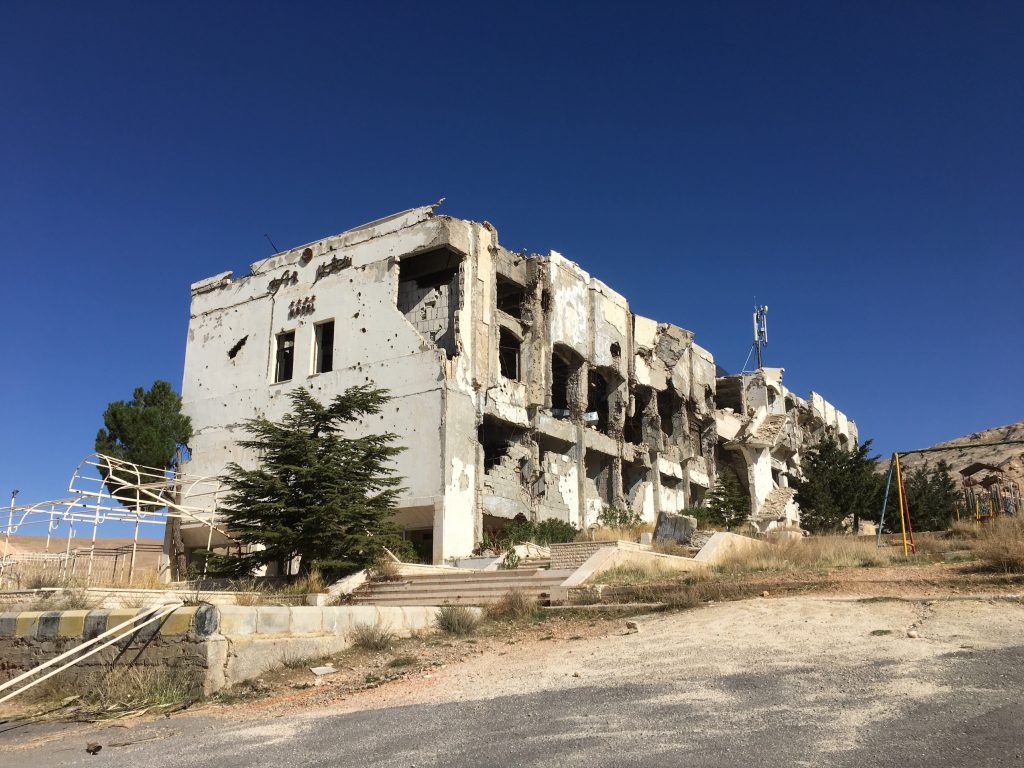
During our visit to the church, we heard a gloriously clear and beautiful voice sing prayers in the original Aramaic – a privilege indeed.
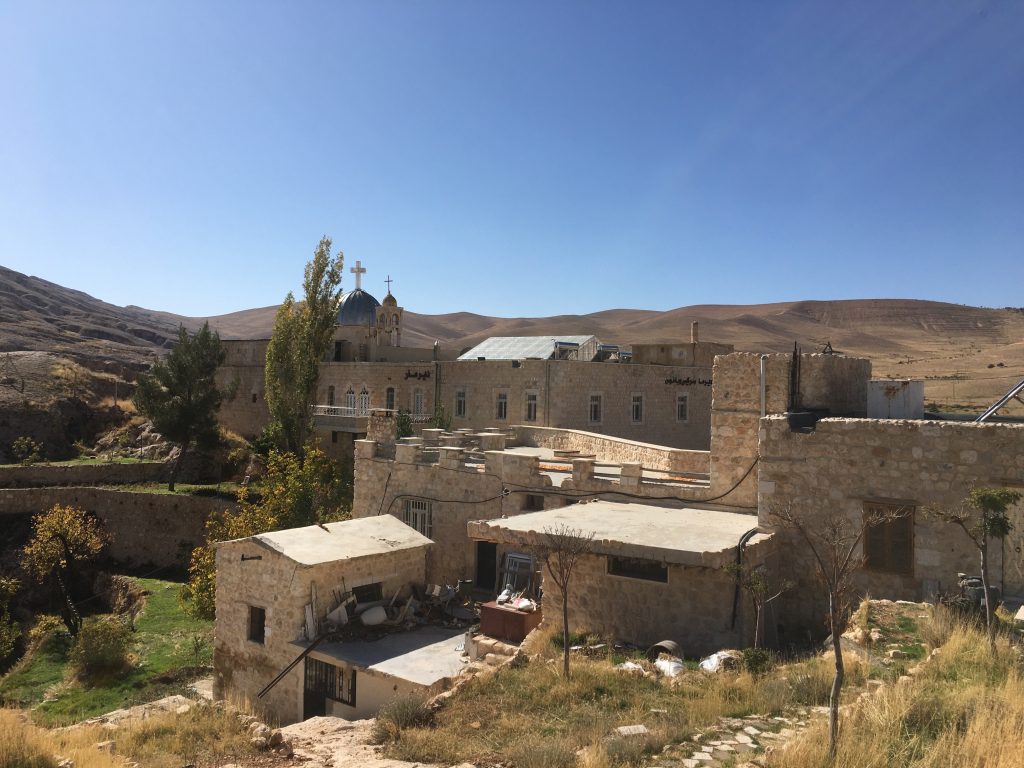
As we went through the countryside, the ravages of war, which we didn’t spot when leaving Damascus, became more and more apparent, derelict buildings riddled with bullet holes, other razed to the ground by bombing and all very difficult to come to terms with.
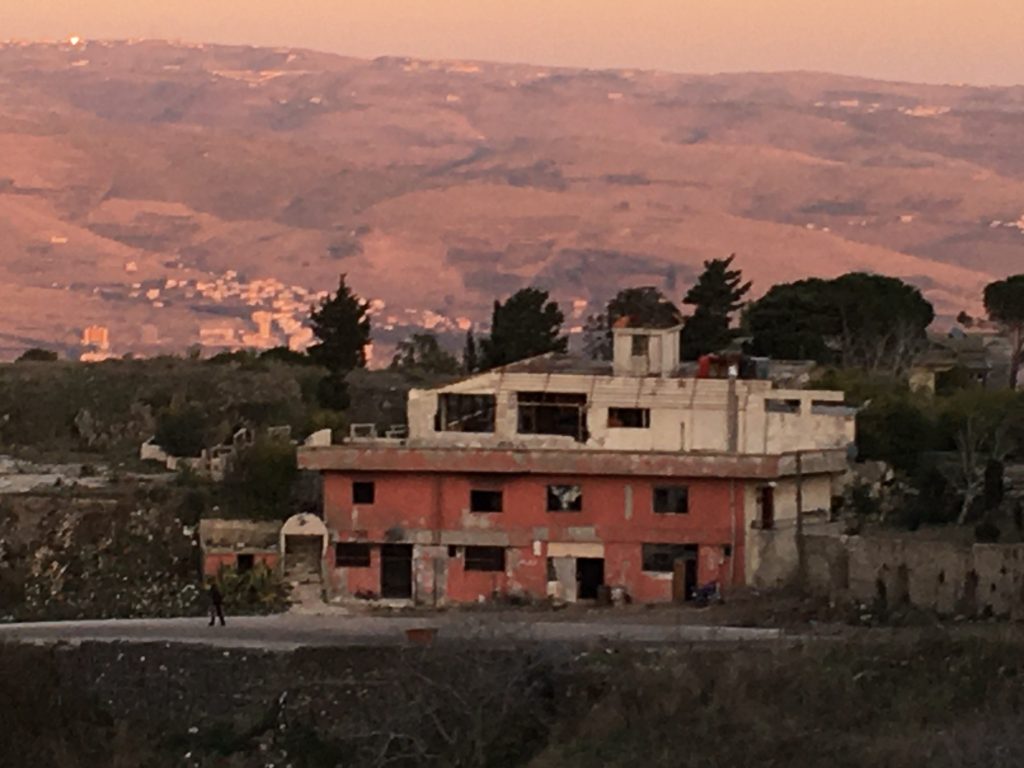
By late afternoon we had reached Krak des Chevaliers, a castle which is regarded as one of the most important medieval castles in the world. Seeing it, in all its glory, with the sun setting behind it was a sight to behold, and I, for one, am very thankful that the Islamic rebels missed out in destroying it, as appears to be their wont through out this part of the world.
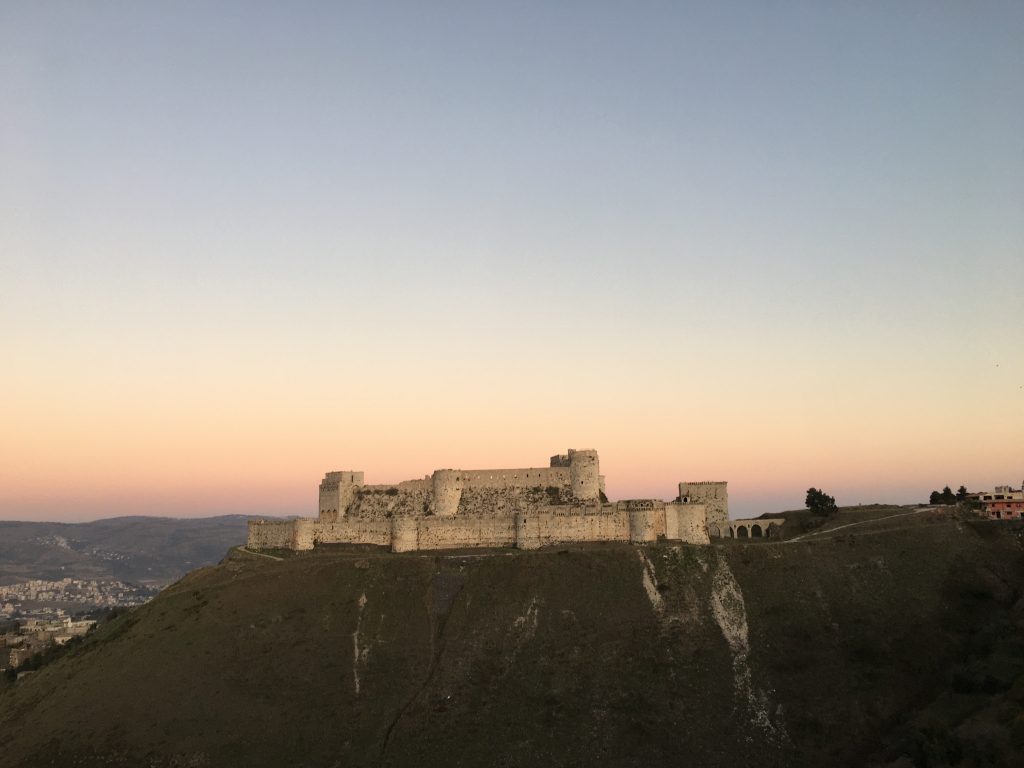
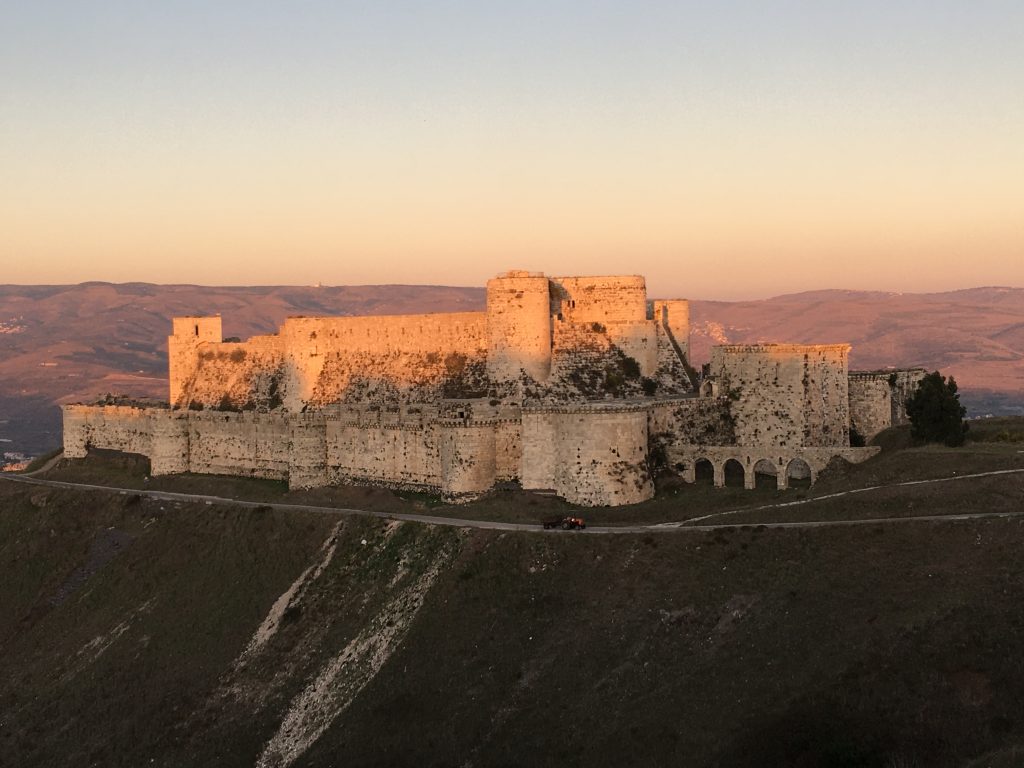
We had dinner in a hotel overlooking the castle, a hotel which was a victim of war, premises attacked and the owner seriously injured. Although not yet open again, our guide knew the owner, and so dinner was arranged. Hopefully having our group for dinner can be the beginning of a new dawn for that family.
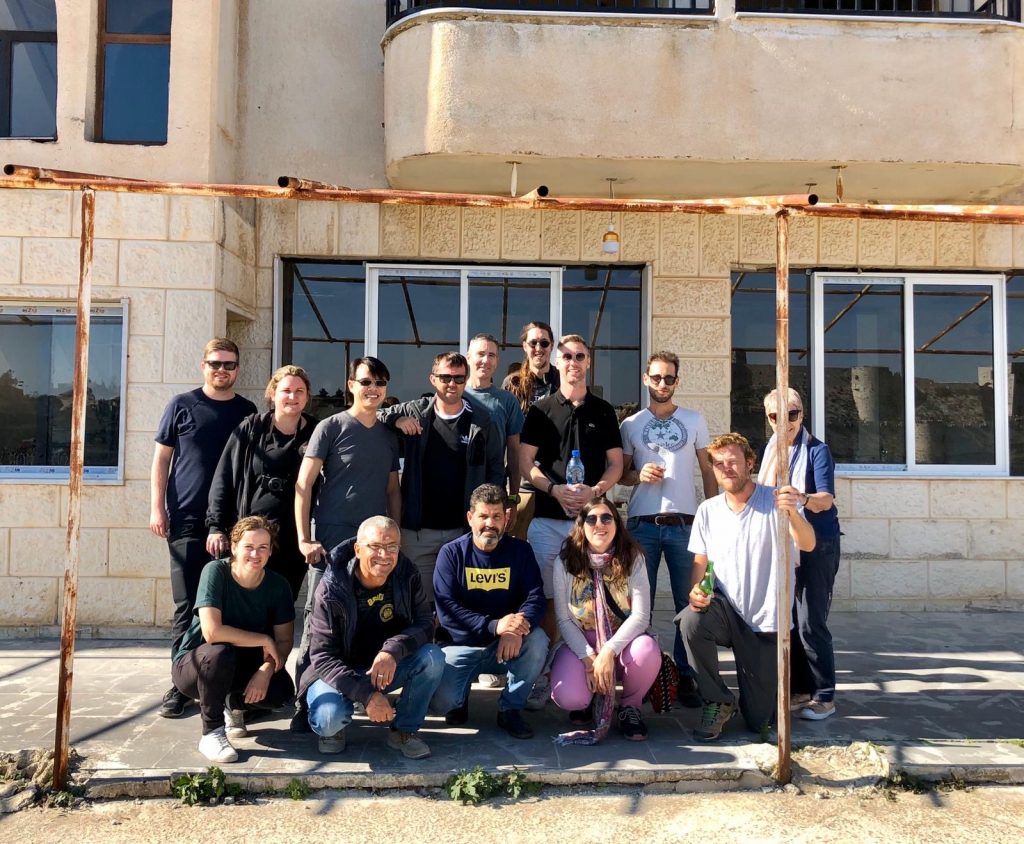
All too soon we were off to a nearby town for the night, and all of us looking forward to the next morning’s exploration of the castle Krak des Chevaliers.
After breakfast, we went straight to the castle. In common with other sites we have seen, restoration has almost ground to a halt – obviously, and very understandably, low on the priority list in Syria just now.
Even though it is a work in progress, I found myself able to imagine the Crusaders sweeping up the path to the castle, the drawbridge being opened, and them being greeted with enormous pomp and grandeur. It is a very large structure, and was probably capable, in its day, of housing hundreds of people.
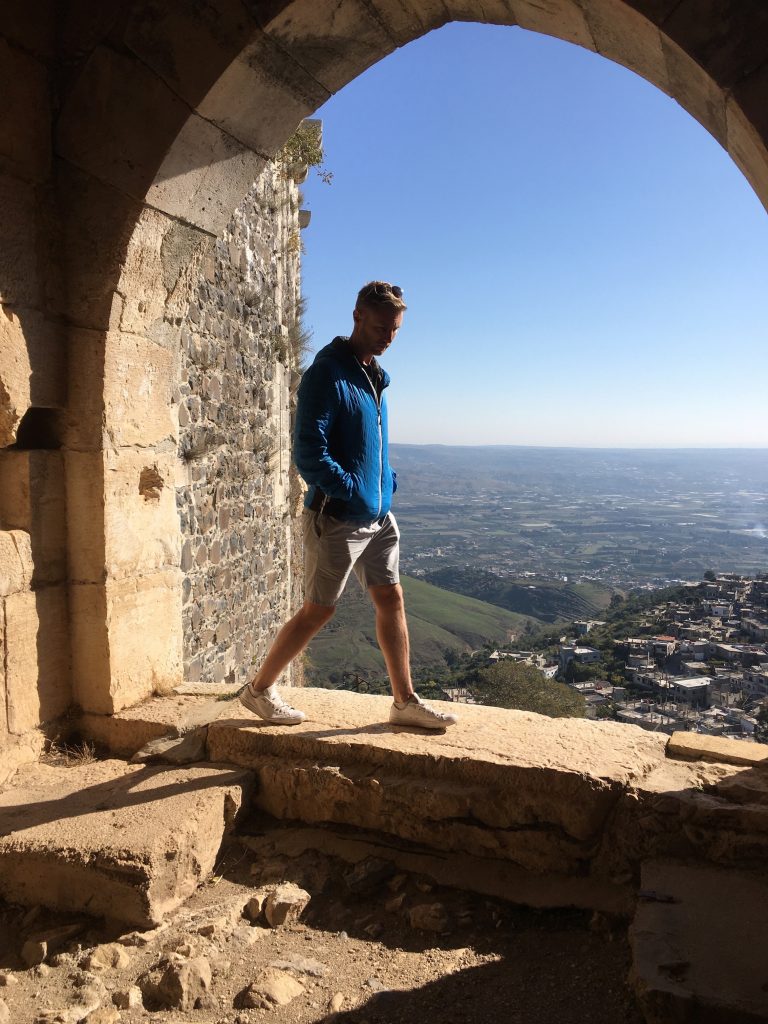
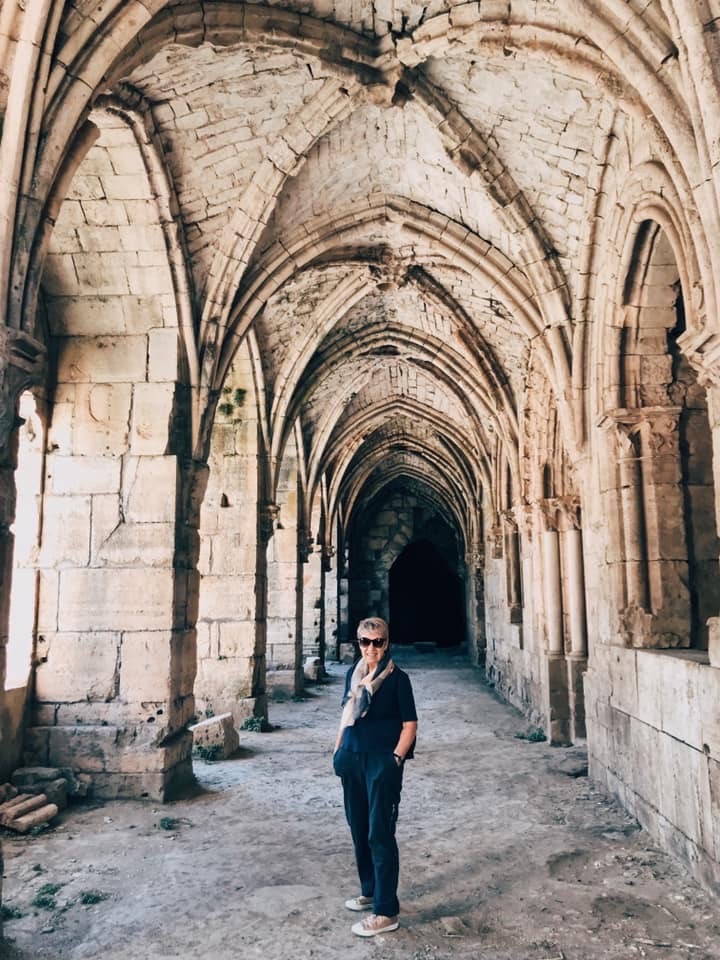
We spent until almost lunch time at the Krak des Chevaliers, and in the afternoon we drove to Homs.
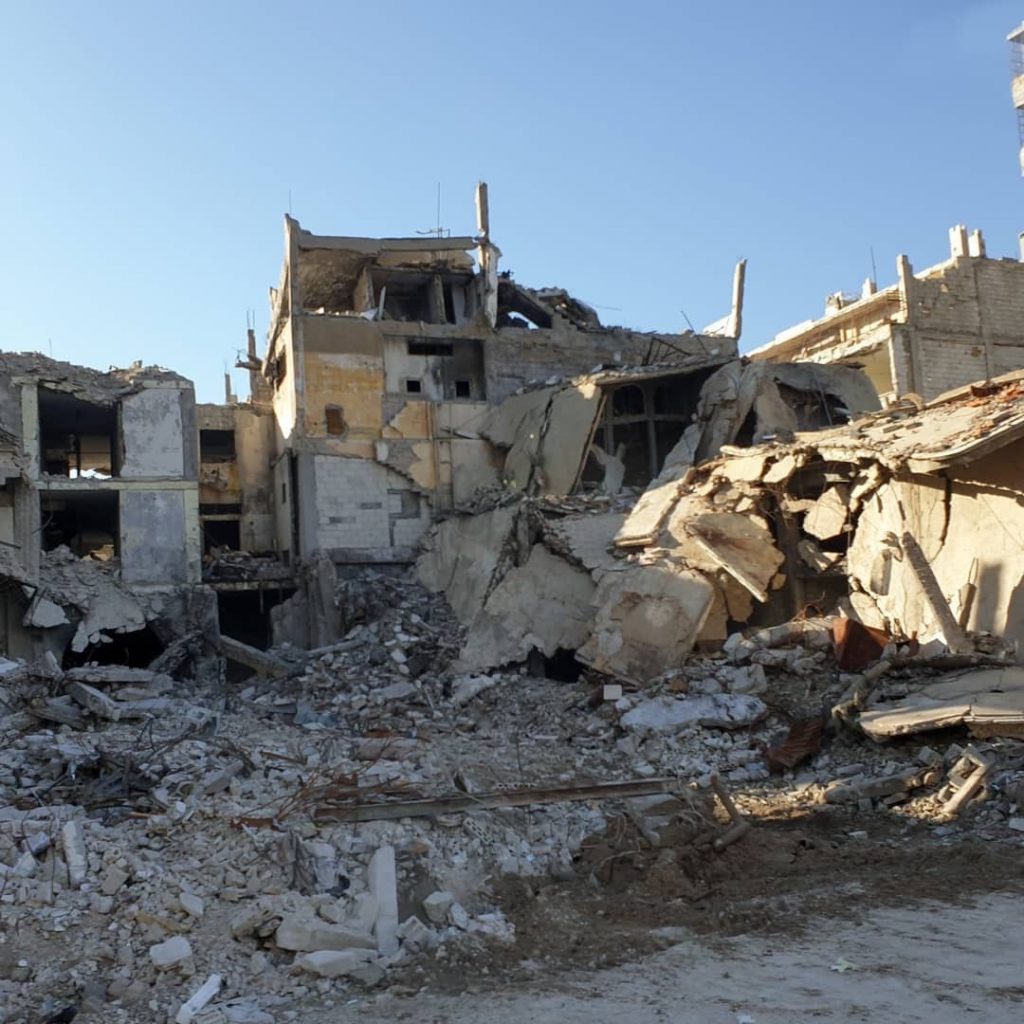
All I could think of while we drove around was Robert Burns quotation – “Man’s inhumanity to man makes countless thousands mourn.”
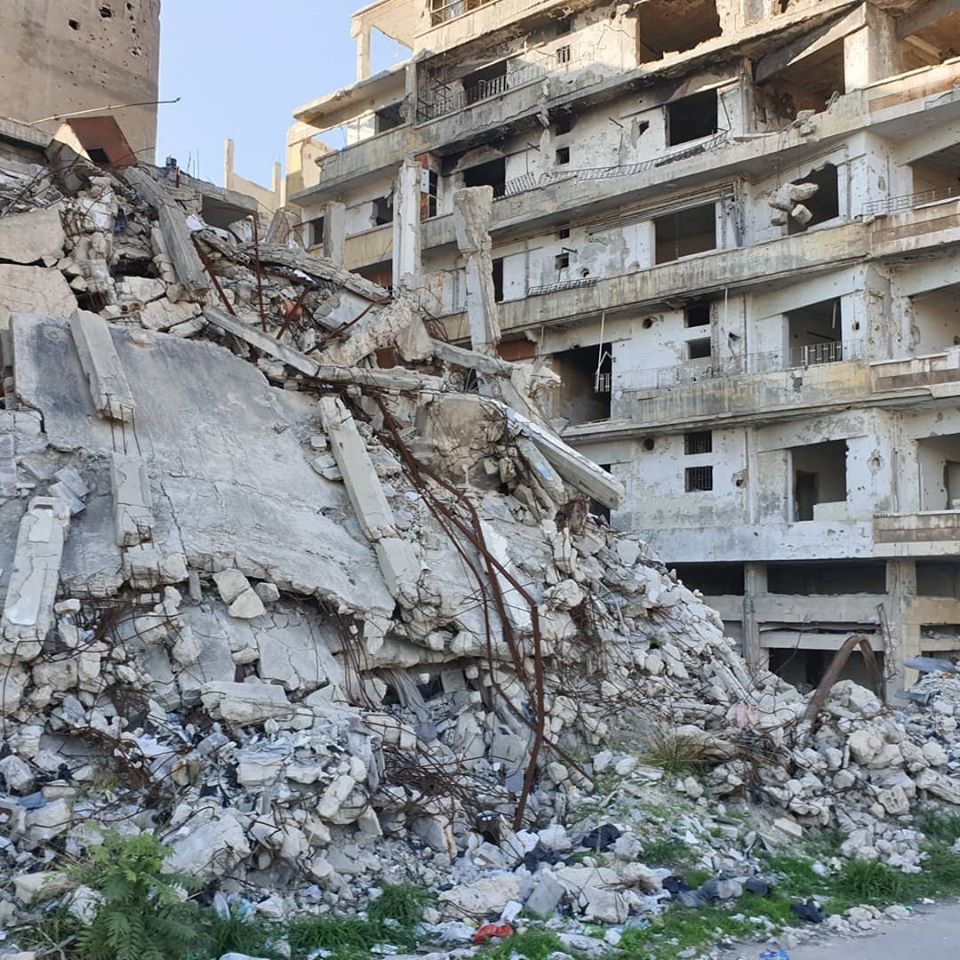
I have been to war torn countries before, but I have never experienced any thing like this – I just do not have the vocabulary to describe the devastation. This adds weight to my strongly held opinion that anyone commentating on Syria, or any other war zone, should be compelled to experience Homs, or a similar city, before they open their mouths.
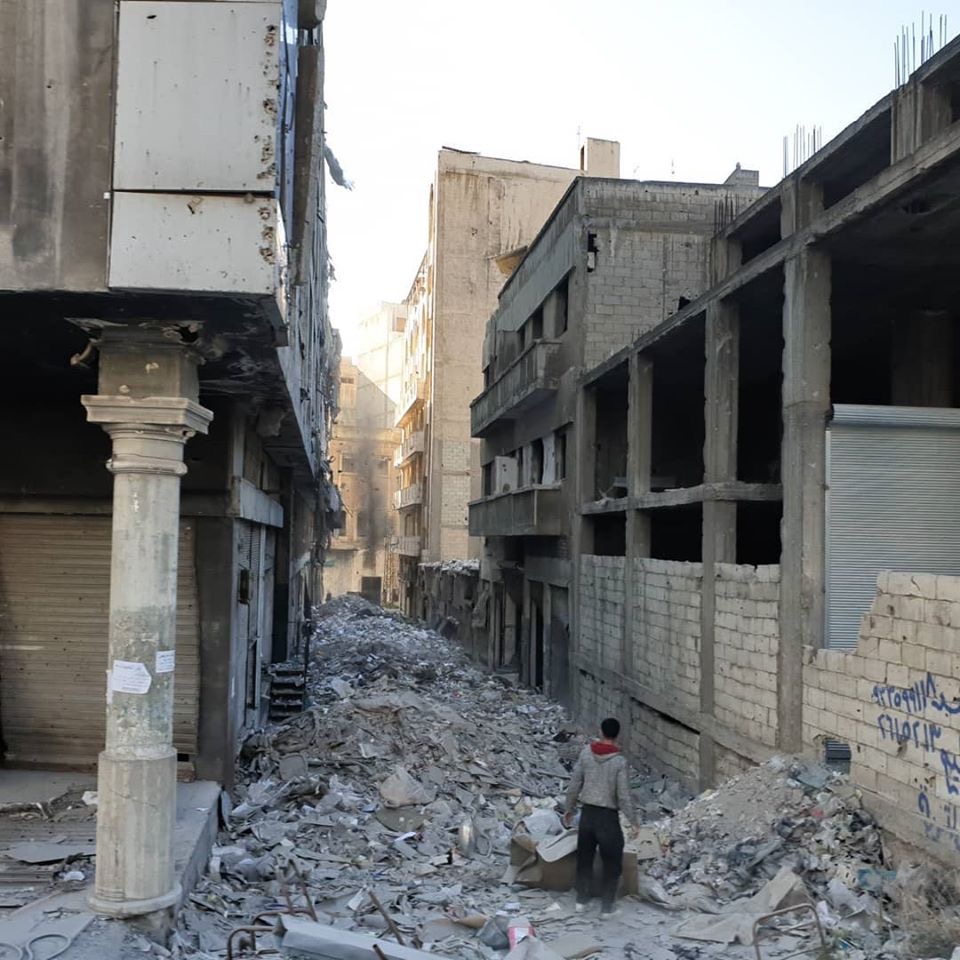
I was reduced to tears when I spotted, on the second floor of a block of flats virtually reduced to rubble, curtains on a window, and a potted plant on the window sill. Thinking about that indomitable spirit and sheer raw courage even now, brings tears to my eyes.
We drove and wandered around Homs for a while and then it was time to go back to Damascus, and the Beit al Mamlouka. The silence in the return bus journey indicated to me that I wasn’t the only person feeling the way I did. We all felt it, I think, and I found that the collective, slightly subdued mood continued through dinner. It was our last night in Damascus, last night in Syria, and some of the young people in our group decided to check out the night life, I had a final wander through the souk and then went back to the hotel.
The next morning after breakfast we said our goodbyes to the amazing staff at Beit al Malmouka, and set off for Beirut. Not directly to Beirut though – we were going to another World Heritage site, to Busra, or to be more proper Busra-al-Sham. This town was once the Roman capital in Arabia, but like many places in Syria, dates back much earlier than that, to the 14th century BC.
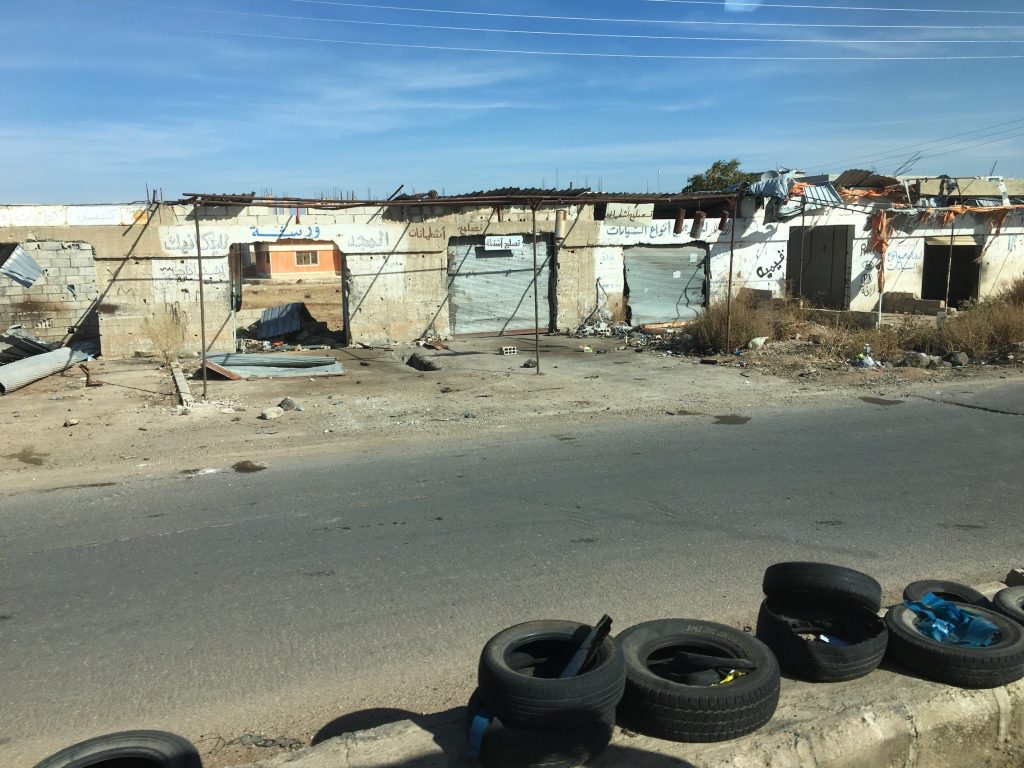
The road to Busra displayed even more evidence of the conflict – bombs and bullet holes decimating many, many homes. Even more heart wrenching was the sight of makeshift tents in the fields; tents which were the current accommodation for at least some of the displaced families.
Busra itself was one of the most incredible Heritage Sites I think I have ever seen. Much of the Roman town is in ruins, and not all of it has escaped the conflict, but to the eternal credit of those responsible, much remains intact, and the Roman amphitheatre is nothing short of magnificent. It has been wonderfully sympathetically restored and is, to my mind, superior to the Coliseum in Rome in every way. This one was built in 2nd century BC, seats 15000 people, and has unbelievable acoustics. There was no one else there other than our party, and it was so easy to close my eyes and imagine the roar of the crowd. Awesome in every sense of the word!
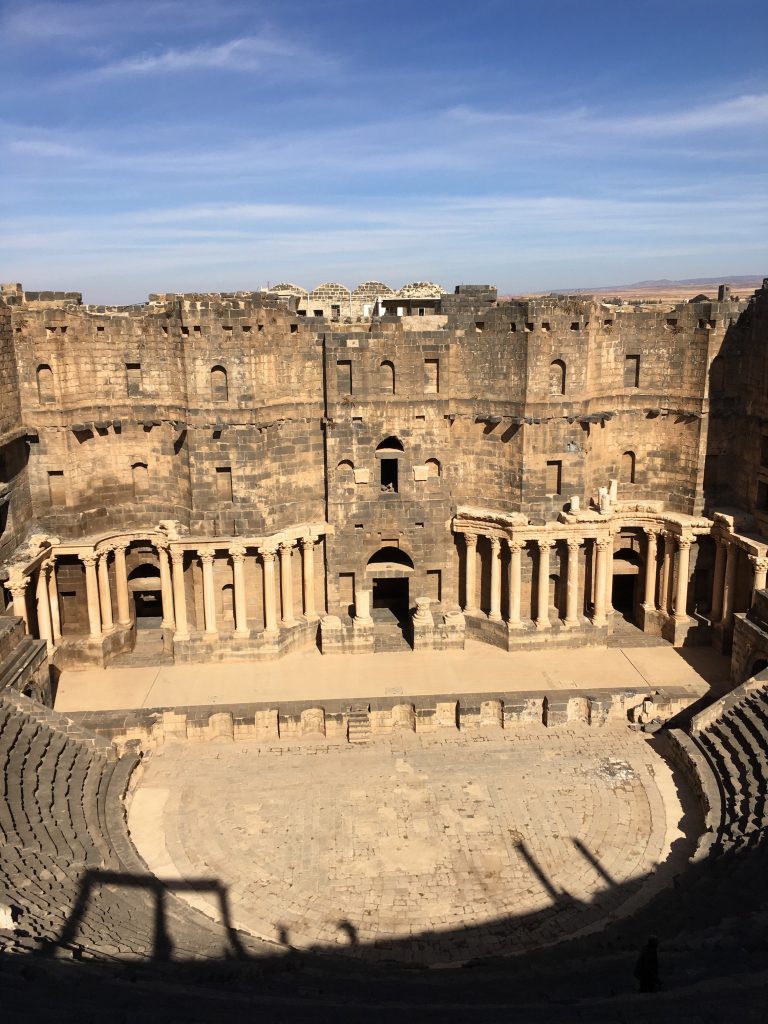
The remains of the Roman capital were almost disappointing after that, but nonetheless fascinating, and I understand some restoration is planned for the future. Small wonder the whole town of Busra is a World Heritage site.
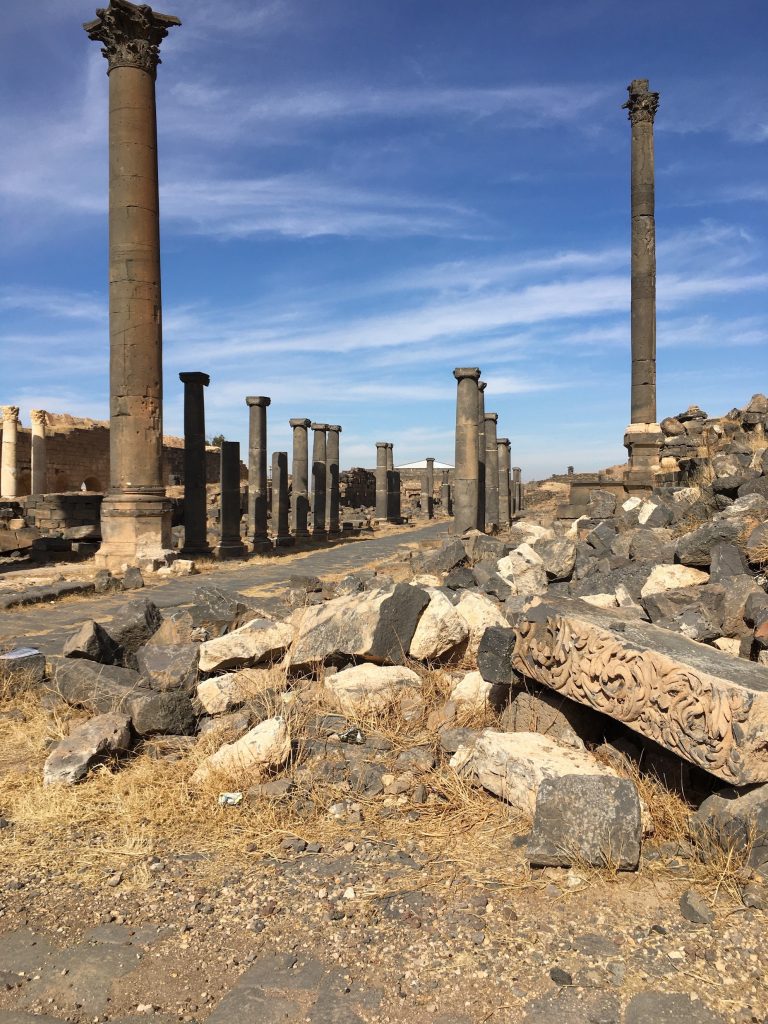
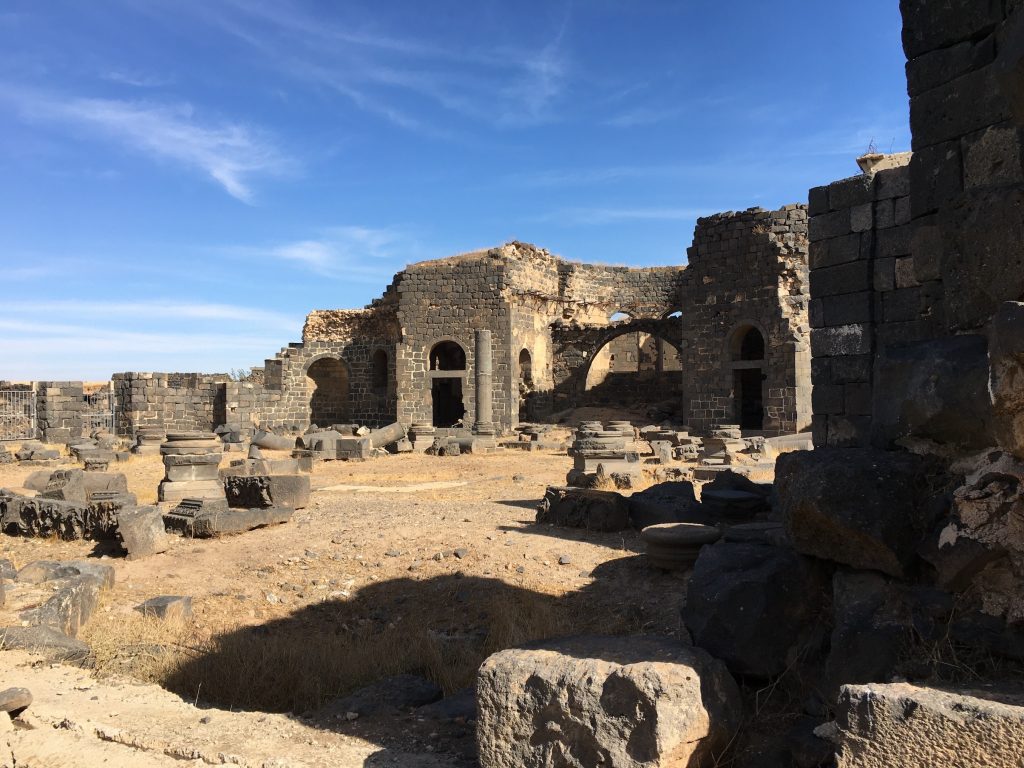
After lunch we headed for the border, and our Syria visit was over. This country has had more impact on me than any other, it has been a fascinating and distressing experience. Sometimes I have felt despair at one man’s total towards another, and equally I have been restored by the resilience and courage displayed by victims.
My visit to Syria was not entirely met with the interest and curiosity engendered by other countries, and I have to say that the venom expressed in a few comments shocked me. As with every other country I have ever been to, my visit in no way expressed support for either side in the conflict and it seems to me that to suggest otherwise in this case is rather naive, if not disingenuous. Are the numerous people in the souk who welcomed us wrong? Should the hotel owner who is trying to get the finance to open his hotel again have refused to serve us dinner?
Syria had an impact on me like no other, and I would love to go back. But more than that, I would love to see the warring sides reaching some kind of accommodation which will bring the loss of life to an end. We all need to remember that we have more in common than divides us.
Huge thanks to my fellow travellers who very generously shared their photographs with me.
